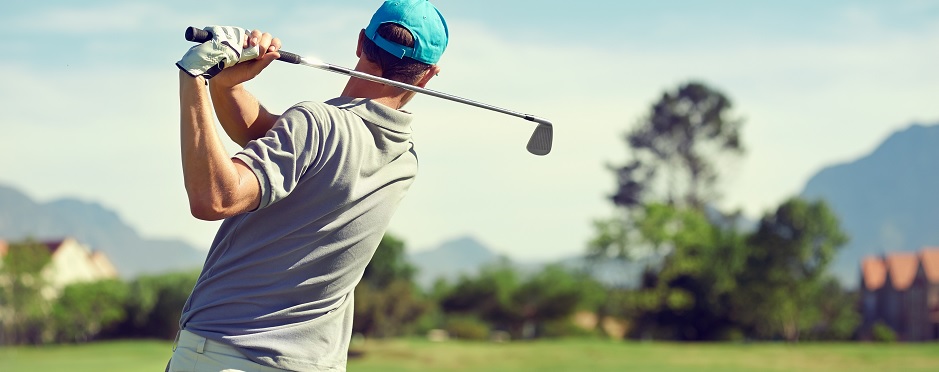
5 Exercises to Help Low Back Pain in Golfers
2 CommentsGolf is like any other sport or physical activity, regardless of how often you play or skill level, there are injuries that pop up. Injury prevalence studies have shown that the most common injury among amateur or recreational golfers is low back pain, ranging from 15-34% of active players. So whether you are someone who just picked up the game, a scratch golfer, walk the course, or ride in a cart, here are some tips on how to stay healthy and continue enjoying your time on the course!
What Causes Low Back Pain in Golfers?
Golf is a true rotational sport. The golf swing is performed through a full body rotation to build centripetal (or circular) force, using the golf club like a whip to hit the ball. The question is: Why is low back pain (lumbar spine pain) so prevalent in golf when it seems like a leisurely, low-intensity sport?
Let’s start with a general fact about the lumbar spine. Due to the orientation of the facet joints (the joints connecting your vertebrae) within the lumbar spine, it is not designed to rotate. Instead, our bodies obtain these larger rotational ranges of motion from other more mobile areas such as the thoracic spine (middle back), hips, and ankles. If the lumbar spine doesn’t provide the mobility for the swing, what does it provide? The role of the lumbar spine is to provide stability and transfer energy linking the lower body to the upper body.
The human body is fantastic at compensating in order to complete a task, and this directly influences the development of pain and injury. Low back pain commonly develops when the lumbar spine experiences increased stress, force, or demands placed on it due to physical limitations elsewhere. Diagnosing these contributory stressors within the golfing population can be broken up into two areas: physical limitations and swing mechanics. Every part of the body either plays a stability or mobility role. As mentioned before, the lumbar spine is designed to provide stability in the golf swing, not mobility. Extremely common examples of physical limitations that often contribute to low back pain is hip mobility limitations, thoracic spine mobility deficits, and hip and core weakness.
Analyzing Your Swing
Through motion and video analysis, prevalence studies, and knowledge of biomechanics, there exists a few common swing characteristics that have the highest correlation with the onset of low back pain. These swing characteristics are 1) Reverse Spine Angle and 2) Early Extension
- Reverse Spine Angle is identified at the top of the backswing. If the torso is bending towards the target at the top of the backswing, that is classified as a reverse spine angle. From this position of side-bending towards the target, the spine must rapidly extend and side bend the opposite direction during the downswing in order to return the club to the golf ball. This motion places remarkably large compressive force and stress through the lumbar spine joints.
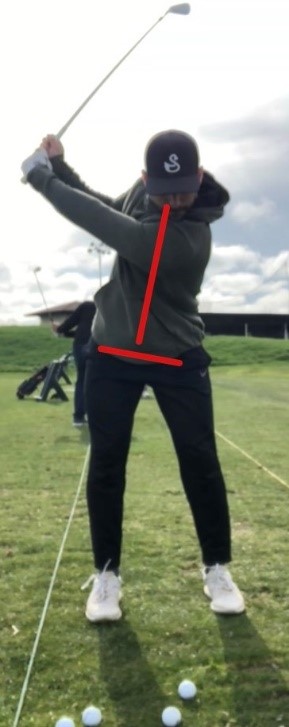
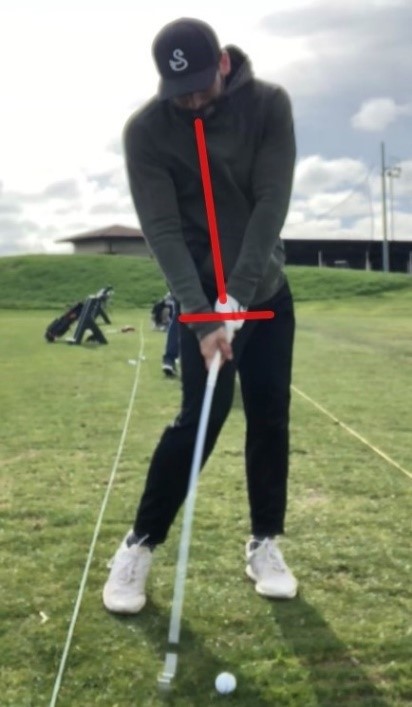
- Early Extension is classified as extending the spine/hips towards the ball instead of rotating the hips/lower body. This, similar to the mechanism during the reverse spine angle, results in a large amount of compressive load (weight) placed through the lumbar spine facet joints.
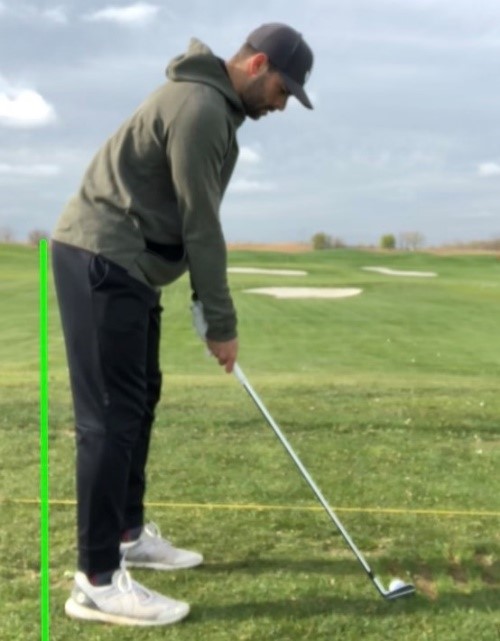
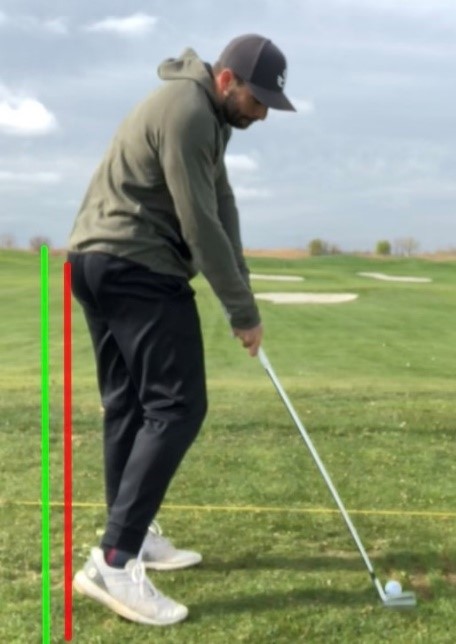
5 Exercises to Improve Flexibility & Strength
Addressing these contributory factors can assist with management of low back pain and prevention.
My recommendations are to incorporate a general flexibility and strengthening program to address the more common physical limitations noted above, i.e. thoracic mobility, hip mobility and flexibility, and hip/core strength. There is an endless list of exercises to address these, but here are some of my favorites:
1. Side Lying Thoracic Rotations (Book Openers)
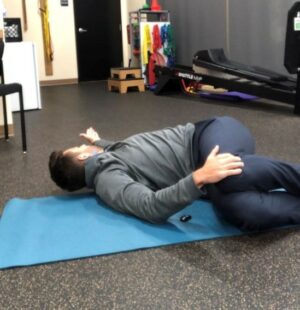
- Start by lying on your side with your knees bent.
- Use bottom hand to stabilize the lower body by keeping the knees down.
- Use the top arm to rotate the chest open, letting your head turn to follow your hand.
- 2 sets, 10 repetitions.
2. Half-kneeling hip flexor stretch
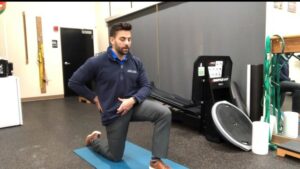
- In a half kneeling position, tuck your pelvis (hips) underneath the trunk by contracting abdominals or glutes.
- You should feel a stretch on the front of the hip, or down through the quadriceps (front of thigh).
- Hold stretch for 30 seconds, perform 3 repetitions each side.
3. Piriformis Stretch
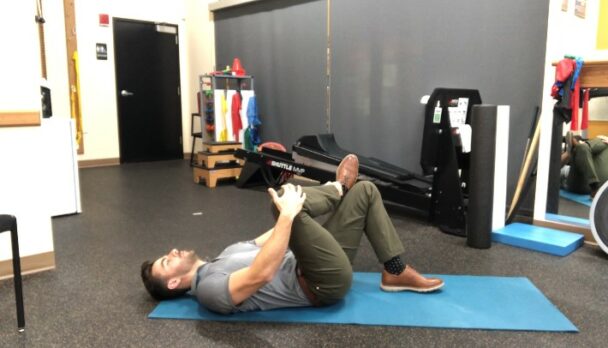
- Lie on your back with knees bent, put one foot on your opposite knee.
- Use hands to pull leg/knee towards the chest (you can modify by pulling knee towards opposite shoulder).
- Stretch should be felt along the back of the hip.
- Hold for 30 seconds, perform 3 repetitions each side.
4. Glute Bridges
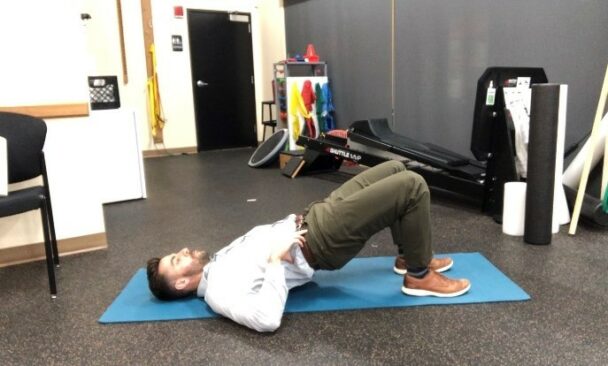
- Lie on your back with your knees bent.
- Squeeze your glutes together, push through your feet, and lift your hips off the floor.
- Make sure you continue to breath. Emphasize the glute contraction.
- Perform 3 sets of 10 reps
5. Bird Dogs
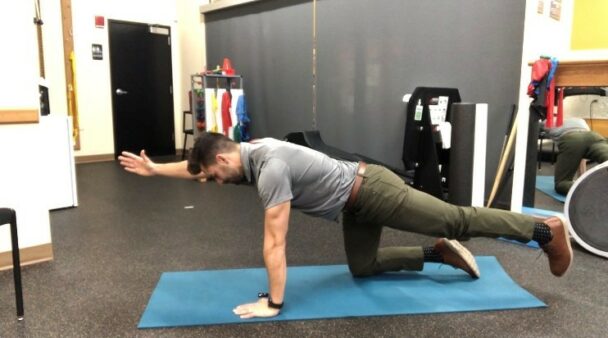
- In a quadruped position (on hands and knees), reach forward with one hand while kicking back with the OPPOSITE leg.
- Keys are to breathe and maintain a flat lower back. Do not let your back arch, round, or rotate.
- Perform 3 sets of 10 reps, alternating between sides.
A Physical Therapist Can Help You Get Back to Your Game
If you are experiencing persistent lower back pain, contact your local Athletico to schedule a Free Assessment. Our experts can also give you a video swing analysis to identify faulty swing characteristics as ways to address any impairments mentioned above. Get back to the greens and on the road to recovery!
The Athletico blog is an educational resource written by Athletico employees. Athletico bloggers are licensed professionals who abide by the code of ethics outlined by their respective professional associations. The content published in blog posts represents the opinion of the individual author based on their expertise and experience. The content provided in this blog is for informational purposes only, does not constitute medical advice and should not be relied on for making personal health decisions.
For Physical Therapy and more golf related content, you can follow me on Instagram @dr_matthew_ventimiglia_pt
Citation:
1. McHardy AJ, Pollard HP, Luo K. Golf-related lower back injuries: an epidemiological survey. Journal of chiropractic medicine. https://www.ncbi.nlm.nih.gov/pmc/articles/PMC2647075/. Published March 2007. Accessed May 18, 2021.

2 Comments
Stephen Penny
They look like they would definitely help me, but I’m not allowed to cross my legs (put my knee on my other leg) on the Piriformis Stretch! But I’ll definitely try the other exercises and stretches! Thanks for the advice!
Greg
This was very helpful